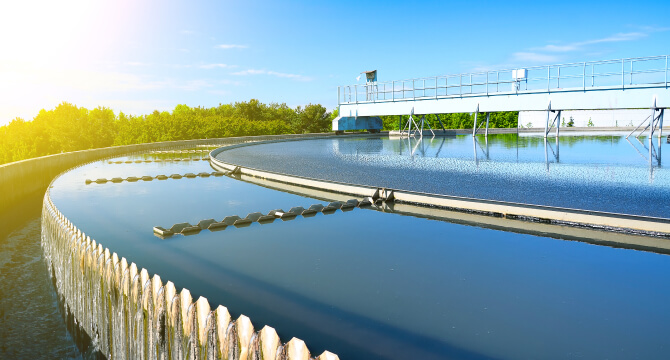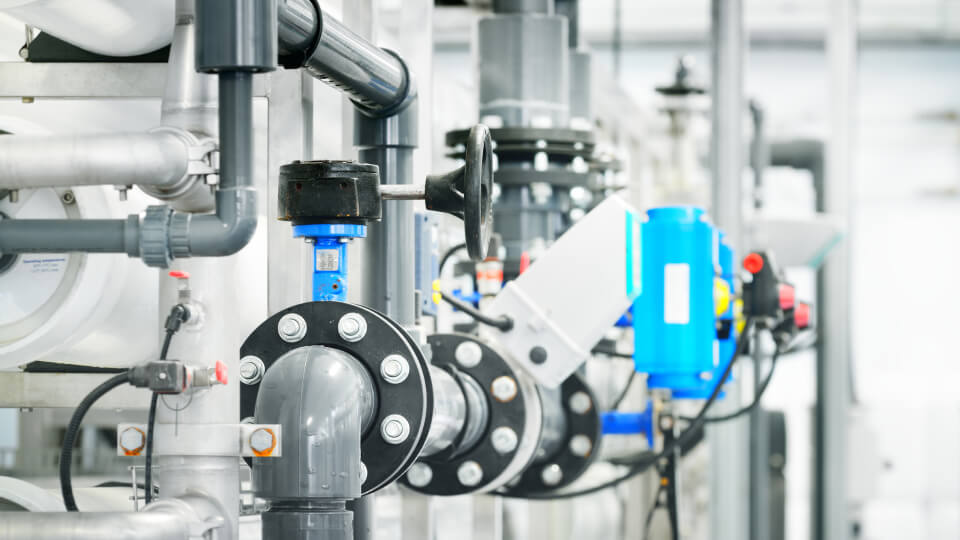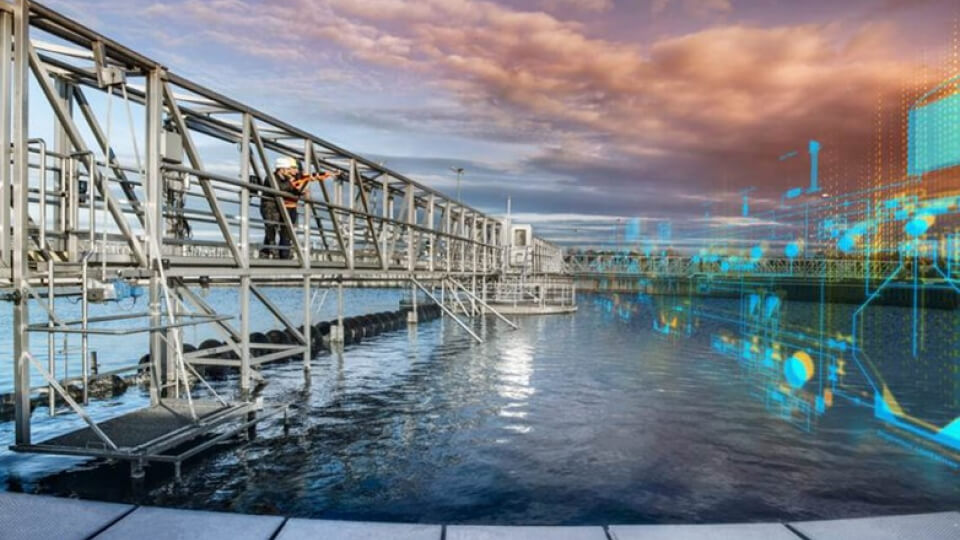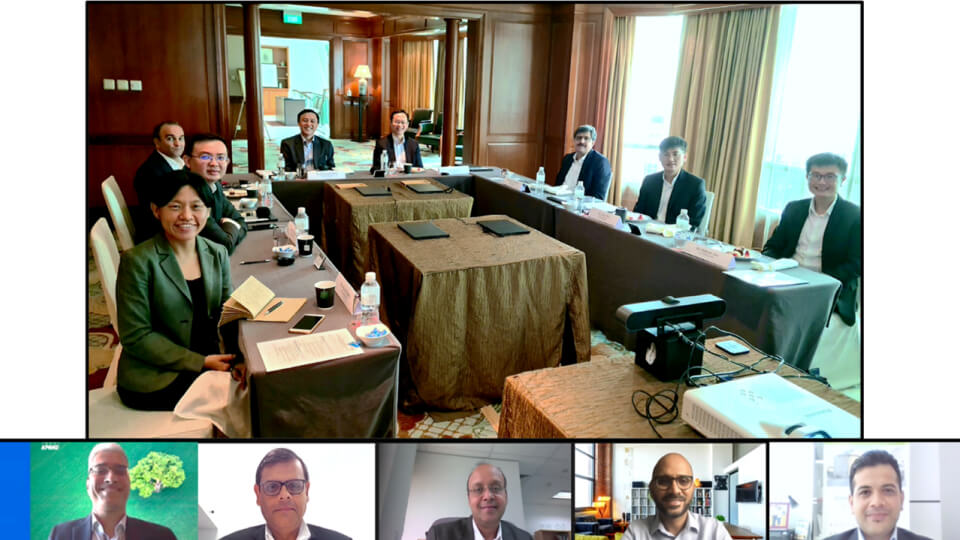Sector Deep Dive #3: Digital Water
Infrastructure Asia organised a deep dive session on the water sector to gather insights from nine industry players on the financing options and key enablers to attract international investments into water. The session also discussed the opportunities and challenges for water infrastructure projects in Southeast Asia and South Asia and ways to increase the involvement of the Singapore infrastructure ecosystem.
The future of water infrastructure will hinge on innovation, sustainability and affordability.
Water is essential for life and most activities of human society, including economic development. But it is not an infinite resource. More water infrastructure will be needed in the future to overcome the challenges brought about by population growth, urbanisation and climate change. According to Sharad Somani, Partner, Head of Infrastructure Advisory & Asia Pacific, KPMG, the demand for sustainable water infrastructure will continue to rise with the commitments made towards the UN Sustainable Development Goals1. There is a strong economic case for investments into sustainable water infrastructure, but translating it into a compelling financial case for investment is not always easy. The availability of cheaper and efficient technologies as well as the focus on sustainable development in the face of climate change will spur this development. Digitalisation and collaboration between the water utilities and private sector can help to create the enabling environment for investment in the sustainable water infrastructure.
Farchad Kaviani, Managing Director, Water Municipal for Southeast Asia, Suez, highlighted that both the water utilities and private sector need to be creative to provide clean and affordable water supply in the future. It is important for water utilities to move away from the status quo and adopt digital solutions to improve their current operation regimes. Greater alignment between the regional governments, water utilities, and the industry is important to advance technological breakthroughs and bring about successful implementation. Suez is focusing on developing innovative solutions, providing test-sites and financing solutions for these new technologies.
Dr Mudassar Iqbal, Executive Director, Software Analytics, Products and Business Development, Visenti, echoed this view and pointed out that investment in water infrastructure should not be focused solely on tackling the current challenges, but needs to anticipate the future. As populations grow and more water infrastructure are built, there is a critical need to have a centralised digital platform to manage billions of datapoints in the network. Artificial intelligence and blockchain can be adopted to connect datapoints and manage a vast amount of water assets efficiently to bring across greater operational efficiency.
Sachin Patwardhan, Managing Director, Head of Project and Export Finance ASEAN & Australia, Standard Chartered Bank, highlighted that there are huge investment needs for water infrastructure in the region, but less than 10% of these projects are privately funded. The challenges to unlock private sector capital in water infrastructure development are attributed to the poor cost recovery and the lack of robust framework for the water sector. Water utilities should therefore review the water tariffs to reflect their underlying cost structure and develop a self-financing model for water infrastructure investment. One example is to use blended financing to crowd more private sector investment into sustainable water infrastructure.
In addition, water utilities should consider new and innovative revenue sharing model to encourage more private sector collaboration in digitalising their water infrastructure. The potential for leapfrogging exists: digital technology has evolved, prices for smart devices have decreased while their functionality has increased.
Pravi Bansal, Managing Partner, Amane Advisors, added that it is imperative for water utilities to review the water tariffs regularly and provide investment support, such as providing concessional land and viability gap funding2, to improve the bankability of water projects. One of the main bottleneck investors and operators face in pursuing digitalisation is the availability and access to baseline data, which are needed to sign off performance standards. Amane Advisors sees increased interest to pursue digitalisation across the region.
Stronger collaborations between the water utilities and private sector is key to create the enabling environment for accelerating digitalisation in sustainable water infrastructure.
Philip Lee, Vice President (APAC), Water & Wastewater, Motion Business, ABB, added that trust and acceptance are crucial to accelerate digital adoption. Trust from all stakeholders, including the governments, water utilities, operators, end-users, is needed. An important step may be to help regional water utilities recognise that digitalisation can improve operation and service delivery. In this respect, having more avenues for collaboration between the water utilities and solution providers will be useful. For example, ABB had worked with the Utility Saigon Water Supply Corporation to deploy a combination of digital solutions to help rehabilitate Ho Chi Minh City’s (HCMC) water distribution network. The trust and deep collaboration between ABB and the water utility has enabled HCMC to quickly and significantly reduce non-revenue water3 from 30% in 2017 to 10% in 2020.
According to Sudipto Sarkar, Water Practice Manager, East Asia & the Pacific Region, World Bank Group, private sector collaboration with the water utilities is important to better structure water projects that attract innovations and investments. This is where organisations like the World Bank Group and Infrastructure Asia can play a role to promote greater collaboration between the public and private sectors so that they develop ideas and projects to accelerate innovation and infrastructure development in the region.
Sudipto Sarkar further mentioned that the performance of water utilities is a critical element to achieve water resiliency in the post-COVID-19 world. The utilities are facing many challenges including climate change, financial constraints, increasing demand for water and wastewater services, and ageing infrastructure. To address these challenges, innovations are needed in many areas, including an increase in digitalisation efforts. To this end, utilities can achieve their innovation goals through the application of digital technologies related to: infrastructure development; efficient operations; and improved services to customers.
Digitalisation can optimise efficiency and create new revenue streams.
Kunal Shah, Managing Director, Sales - Asia Pacific, Anaergia, highlighted that digital solutions could help water utilities optimise operational expenditure, enhance revenues, increase capital efficiency, conduct predictive maintenance and increase the overall resiliency. Digitalisation can, for example, also reduce O&M costs by optimising chemicals and energy used in water treatment and conveyance, reduce non-revenue water and facilitate tracking, billing and payment processing through deployment of smart metering and blockchain solutions, which are well proven to enhance revenue collection. Water utilities can look forward to increased capital efficiency as a result of targeted rehabilitation of faulty infrastructure and reduced costs from unexpected water main breaks with the adoption of digital solutions in their water assets.
Jason Tan, Director Engineering, Binnies Singapore, advised that water utilities should reap the full benefits of digitalising their water assets by integrating and implementing digital solutions on a larger scale instead of in silo. This can be achieved by being clear about their long-term water needs, charting out their digitalisation roadmap and dedicating resources to it. A successful digital water journey will however need to be supported by a ready and robust digital infrastructure network.
Singapore can contribute to the development of water projects in the region.
Jason and Philip highlighted that Singapore is the hub of water innovation and is also the headquarter to many top water innovation companies in the world. The Singapore water industry has deep expertise in developing innovative solutions with advanced water utilities like PUB and integrating these best-in-class solutions to solve pressing water issues in the region. Singapore also has a large and comprehensive infrastructure ecosystem across the value chain to enable test bedding of innovation and support the region’s water infrastructure growth.
Sachin further pointed out that Singapore’s robust financial services sector and the push for sustainable financing can further support the growth of the region’s water industry. Singapore has a comprehensive suite of institutional investors and liquidity in private wealth. Regional governments and utilities could explore the wide range of financing available in the Singapore market, including emerging sources of blue finance.
Given Singapore’s experience in digitalising its water journey, it can also play a vital role in knowledge transfer and create awareness of digitalising the existing water infrastructure to tackle the challenges of the future.
Conclusion
Water is an essential resource that our lives cannot do without. As the world experiences more intense weather patterns due to climate change, growing population and rapid urbanisation, the security of water resources will be threatened. The future of water needs to be affordable, resilient, and sustainably sourced. To prepare for the future, we need stronger collaboration between the water utilities and private sector, a new commitment to adopt digital solutions, and secure strategic investments to build up resiliency of our water supply.
Singapore has a comprehensive infrastructure and financial ecosystem, with expertise and experience in the water sector. Singapore-based players can collaborate further among themselves and with the regional counterparts to develop more water projects in the region.
1 The Sustainable Development Goals (SDGs) are the blueprint to achieve a better and more sustainable future for all. They address the global challenges faced, including poverty, inequality, climate change, environmental degradation, peace and justice. At its heart are the 17 SDGs, which are an urgent call for action by all countries - developed and developing - in a global partnership. Clean water and sanitation is one of the goals. Source: Link
2 Viability gap funding is a capital grant, subsidy or equity from the government to render a PPP project financially viable and bankable.
3 Non-revenue water is defined as water that is pumped out/produced and then lost or unaccounted for.
This article was collated and written by Matthew Tien, Lead, Infrastructure Asia.





